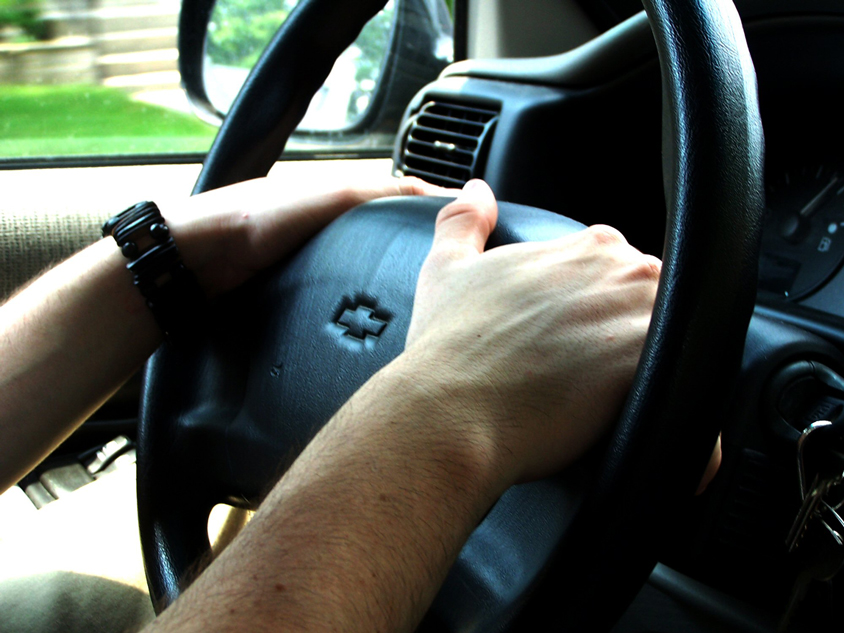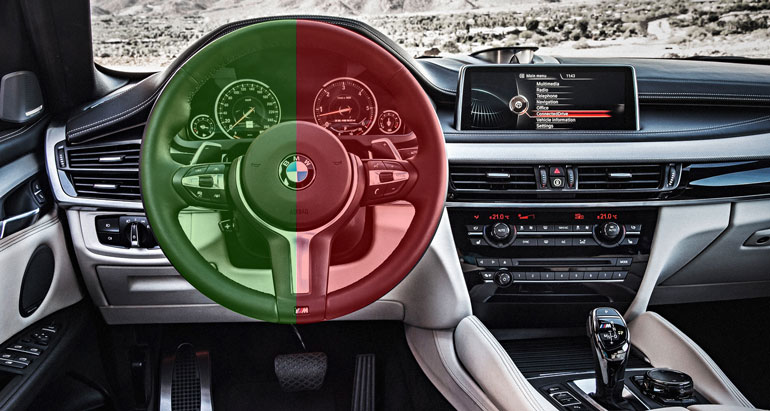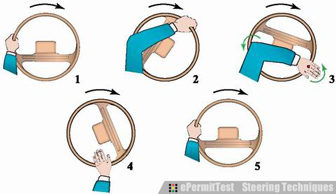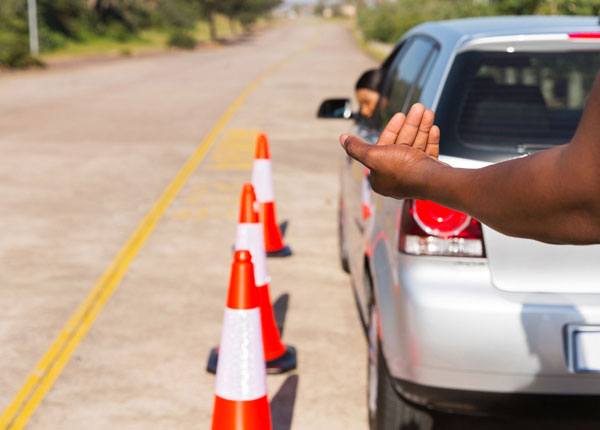
Steering Techniques: Hand-to-Hand vs Hand Over Hand Steering
Updated Oct. 26, 2020While learning the correct steering techniques and hand positions for different situations may seem like a drag, it is important to get into the right habits from the start of your driving journey. Once you have fallen into bad habits, getting rid of them is extremely difficult. Failing to observe the correct techniques during your practical driving exam could cost you your license.
Getting to grips with the various possible steering techniques begins with learning to position your hands on the steering wheel appropriately for the immediate driving situation. When you can correctly identify the hand position you should be using, the next step will be learning and practicing several different steering methods. These include the “hand to hand” technique (pull-push steering) and the “hand over hand” technique. One-hand steering and fixed input steering will also be discussed, though these techniques are only appropriate in certain situations.
 NHTSA recommends using one-hand steering only when turning while backing, or operating vehicle controls that require removing a hand from the steering wheel.
NHTSA recommends using one-hand steering only when turning while backing, or operating vehicle controls that require removing a hand from the steering wheel.Positioning hands on the steering wheel
Each of the three primary hand positions listed here comes with its own advantages and disadvantages. These positions are:
- The 10 and 2 position
- The 9 and 3 position
- The 8 and 4 position
These three main positions are explored in more detail below.

Hand position 10 and 2
The 10 and 2 driving position is the one with which most driving students are familiar, as it used to be the standard recommendation made by every driving instructor. Indeed, it is still recommended as an ideal hand position in many state driving handbooks and driver’s education programs.

However, the 10 and 2 position is no longer recommended as widely as it once was. It is now understood that this position can put drivers at greater risk of injury if their vehicle is fitted with an airbag. If the airbag is released, the driver’s hands may be thrown back toward their face from this position. Consequently, we do not suggest driving with the 10 and 2 hand position if your vehicle is equipped with airbags. Certain steering techniques also contribute to airbag-related injuries; we will discuss this in greater detail further down.
Hand position 9 and 3
A minor adjustment from the 10 and 2 position to the 9 and 3 position is advantageous for several reasons. This position affords a similar level of control as the 10 and 2 position, though with greater leverage on the steering wheel. Plus, holding the wheel in the 9 and 3 position will ensure you do not injure yourself if the driver’s side airbag deploys. If you are using the fixed input steering technique, the 9 and 3 hand position should be the one you choose.

As the 9 and 3 position is widely accepted as a safer and more effective alternative to the traditional 10 and 2 position, you will not be penalized for using it during your practice driving exam. Fortunately, every state in America currently lists the 9 and 3 hand position as an acceptable steering wheel grip. For these reasons, we believe this hand position should be the one you focus on while learning to drive.
Hand position 8 and 4
When it comes to hand position 8 and 4, the jury is very much out. Many state’s driving handbooks recommend this position as an alternative to the 10 and 2 position, when driving a vehicle fitted with airbags. Hand position 8 and 4 has a slight advantage over 9 and 3, in that it is a more comfortable position to maintain for longer periods.

Though, the 8 and 4 position receives equally wide criticism from driving experts who are not convinced it gives drivers sufficient leverage on the steering wheel. Certainly, the 8 and 4 position does not offer the same leverage as the 9 and 3 position. For this reason, it is generally only recommended for use when driving on a highway or in a similar situation where little maneuvering is required. You may also revert to this position for a short time, if your arms become tired in the 9 and 3 position.
Steering techniques
There are two main steering techniques that can be used in general driving situations. These are the “hand-to-hand” and “hand-over-hand” techniques. Like hand positions, these two methods have their own plus-points and draw-backs.
Hand to hand steering – push–pull steering
“Hand-to-hand” and “push-pull” refer to the same steering technique. You may also hear this method described as “shuffle steering”. In push-pull steering, the driver feeds the steering wheel through their hands, with both arms remaining on their respective sides of the wheel. When using this technique, your hands will move closer and further apart but will never cross over. If the airbag deploys, the risk of injury will be minimal as your hands will not be in the way.
 Hand-to-hand steering method may also be called “push/pull” steering. Using this steering method, your hands do not cross over the face of the steering wheel, and therefore there is less chance of injury to your face, arms, or hands in the event of an air bag deploying.
Hand-to-hand steering method may also be called “push/pull” steering. Using this steering method, your hands do not cross over the face of the steering wheel, and therefore there is less chance of injury to your face, arms, or hands in the event of an air bag deploying.Most drivers associate the hand-to-hand steering technique with turning slow corners, though it is also appropriate when navigating sharper curves at high speed. While the hand-over-hand method is often recommended for sharper bends and higher speeds, the push-pull technique actually affords the driver better control in these situations. Reason being that hand-to-hand steering positions the thumbs pointing upward, offering a superior downward grip on the wheel.
Here is how hand-to-hand steering plays out during a right turn:
- 1

When using hand-to-hand steering to execute a right turn, begin by pushing your left hand upwards until it reaches the 12’o clock position at the top of the wheel. While doing this, you should allow the steering wheel to slide through your right hand so that it remains in the 3’o clock position.
- 2

Next, firmly grasp the wheel with your right hand and continue turning it in a clockwise direction. At the same time, slide your left hand anti-clockwise to the 6’o clock position. When your right hand meets your left hand in position 6 you may continue to move the wheel clockwise with your left hand.
- 3

When you have finished turning, complete these steps in reverse order to bring the steering wheel back to neutral and your hands to the 9 and 3 position.
Hand over hand steering
Hand-over-hand steering appears to be more efficient than push-pull steering and is favored by many drivers as a result. In reality, hand-over-hand steering requires more effort than hand-to-hand steering and is now considered to be not as safe. You will not be penalized for using the hand-over-hand steering technique during your driving exam, though we recommend getting used to hand-to-hand steering as early as possible.
To make a right turn using hand-over-hand steering:
- Start with your hands in the 9 and 3 position. Push the wheel clockwise with your left hand, taking your right hand with the wheel rather than allowing it to slide and remain in place.
- Let go of the steering wheel with your right hand when your left reaches the 1’o clock position. Cross your right hand over your left and grasp the wheel at position 11 or 12.
- Release the wheel with your left hand and continue moving it clockwise with your right. Turn the wheel back to neutral position when the turn is complete.

One hand steering
Most drivers assume that one-hand steering and left-hand steering are never acceptable steering methods. In fact, they are allowable and necessary but only during very specific driving situations.
Your driver’s handbook probably recommends keeping both hands on the steering wheel at all times. While this is good advice, it will not work when you are backing up or attempting to parallel park.
The DMV explicitly state that drivers cannot rely solely on mirrors when reversing or parallel parking. During these maneuvers you must turn and physically look over your shoulder to see if the space behind you is clear. Obviously, this would make keeping both hands on the steering wheel impossible.

It is also acceptable to steer with one hand whenever you need to operate controls inside the vehicle, such as headlights, windshield wipers, temperature controls, hazard lights or the gear stick, on cars with a manual transmission.
One-hand steering limits your control of the vehicle and is only allowable if:
- You must reverse or parallel park, as this requires you to release the wheel to look over your shoulder.
- You are using one hand to operate vehicle features necessary for safety, comfort or information.
Hand over hand steering and airbag injuries
In hand-over-hand steering, the driver’s arms will pass across the airbag deployment zone. If the airbag deploys while your hands are in the firing line, it will throw your arms back into your face at roughly 200mph. For many unfortunate drivers every year, careless hand positioning results in serious injury when the driver’s side airbag deploys. Common airbag-related injuries include:
- Forearm fractures
- Wrist fractures
- Finger and thumb fractures
- Nose and cheekbone fractures
- Facial lacerations (when the driver is wearing rings, bracelets or spectacles)
 If an air bag deploys and a driver's arms are in the way, they may get broken or thrown back into the driver's face with enough force to cause serious injuries.
If an air bag deploys and a driver's arms are in the way, they may get broken or thrown back into the driver's face with enough force to cause serious injuries.Driving hand-over-hand should be avoided wherever possible, even if your vehicle is not equipped with airbags. You may one day drive a car that does have airbags and will need to be in good habits to keep yourself safe.




